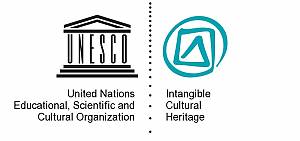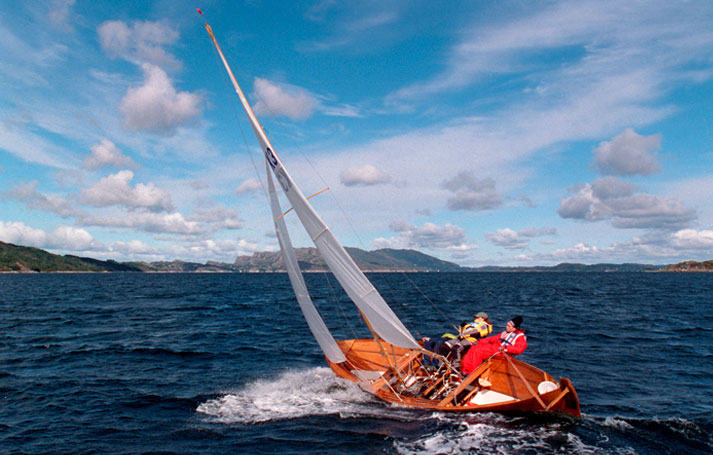2021: The entire Nordic clinker boat tradition is inscribed on UNESCO’s representative list of intangible cultural heritage .
There are three different protected lists within intangible cultural heritage at UNESCO. The Klinkbåt tradition is listed on the Representative List of Intangible Cultural Heritage and the Oselvarverkstaden and the oselvar culture are also listed on the List of Good Conservation Practices.
2016: The oselvar workshop and the oselvar culture are listed on UNESCO’s list of intangible cultural heritage
The decision was made at UNESCO’s intergovernmental committee meeting, Thursday 1 December 2016


The Oselvaren is a clinker-built wooden boat from Hordaland that has developed after a development over several thousand years. He has traditionally been used as a utility boat and for modern racing rowing and racing sailing since the 19th century. It is not the boat itself, but the knowledge of building and using it, that is protected. Stiftinga Oselvarverkstaden in Os in Hordaland is the only place where Oselvarar is built today.
Kristin Danielsen, director of the Cultural Council, congratulates Oselvarverkstaden on the nomination. – This is very gratifying for everyone who is involved in boat building and traditional crafts in Norway, and I think the appointment can lead to increased knowledge about how to work on passing on intangible cultural heritage, says Danielsen. Based on the Cultural Council’s recommendation, the Ministry of Culture put forward this nomination proposal for UNESCO in March 2015.
The Oselvar workshop and the Oselvar culture
The decision means an important recognition of the Oselvar workshop, which for many years has worked to pass on knowledge about boat building in general and the Oselvar boat in particular. In recent years, they have placed increasing emphasis on the environment around the workshop itself being knowledgeable and that these are important supporting players and drivers for development at the workshop. The nomination proposal is therefore about both Oselvarverkstaden and Oselvarkulturen.
Oselvarverkstaden has worked on writing the nomination proposal itself, and has also received support from Norwegian NGOs in the process.
In October 2016, a book was also published about the boat and the Oselvar culture. The author is Kjell Magnus Økland. This is an important contribution in a long-term effort to disseminate knowledge about the boat, about the activity at the workshop, the use of the boat and the Oselvar culture.

Recognition for traditional crafts in Norway
– The registration is also an important recognition for the local community, led by Os båtbyggjarlag and Os municipality, but also for Hordaland county council, which has actively supported and promoted the work at the workshop. This is also an important appointment for everyone who works with traditional crafts in Norway, says Danielsen.
The Norwegian UNESCO Commission gives the following explanation of intangible cultural heritage: “Language, performing arts, social customs, traditional craft skills, rituals, knowledge and skills related to nature are examples of intangible cultural heritage”.
Due to its unique nature, intangible culture has faded away as invisible in relation to material cultural heritage, but was made a special main focus area through UNESCO. In a global perspective, intangible cultural heritage is not only given attention, but also several concerns with regard to all oral cultural traditions and cultural knowledge that are daily disappearing from the human repertoire.
The convention shall lay the foundation for a more targeted and systematic effort to document, preserve and promote intangible cultural expressions such as oral narrative genres, rituals and customs, dance, music, knowledge of traditional crafts, etc., both nationally, in connection with cultural meetings, i.e. through the investment field diverse memories, and through international projects aimed at developing countries.
The Oselvarverkstaden is the first element to be entered on UNESCO’s register of intangible cultural heritage from Norway and the Nordic countries. The inscription indicates that the Oselvarverkstaden are particularly good at the work with knowledge management, the passing on of craft knowledge, and not least an exemplary local anchoring.
Good protection methods around the world
Of UNESCO’s three lists, the Ministry of Culture sees this list as the most important tool for passing on intangible cultural heritage. On this list you get information about good conservation methods around the world and people can thus gain an insight into the process surrounding this work. This is an important principle in the work with the convention.
There are today (1 December 2016) 15 entries on this list, from several countries in South America, Asia and Europe. The introductions mention various measures that ensure that various traditions are passed on and several contributions deal with work with children and young people. Other contributions mention various processes in the work of passing on traditions: For example, Belgium mentions targeted work to ensure that the carillon tradition is passed on. The methods can easily be used by other countries and in work to pass on different types of cultural expression. From South America, we learn about a supranational collaboration between Bolivia, Peru and Chile. They tell about a concrete collaboration project which will ensure that the Aymaras, who are an indigenous population group, can maintain and pass on their traditional knowledge. Passing on knowledge and skills is a core point of this convention and this list helps spread information about good measures and methods that can help ensure awareness of these processes around the world. See the list: http://www.unesco.org/culture/ich/en/lists
